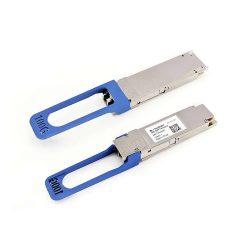Blog

SFP+ vs SFP28 Transceivers
SFP+ and SFP28 optical transceivers are small pluggable devices which are used to connect network devices, such as switches and routers, to optical fibres and transmit and receive data at...

UNDERSTANDING THE DIFFERENCES BETWEEN QSFP+ AND...
QSFP+ (4x10Gbps Quad Small Form-Factor Pluggable) and QSFP28 (4x25Gbps Quad Small Form-Factor Pluggable28) are two QSFP form factors used to plug into compatible switches which use QSFP+ and QSFP-based switches....

Optical transceiver form factors – SFP+/QSFP+/Q...
Optical transceivers were developed for mass production in the early 80s which was the early transition from embedded electrical analogue (wire) based communication systems across to early fibre-based systems. The...

What is an Optical Transceiver?
The term optical transceiver is an industry term within the communications industry that describes a component which converts high speed electrical signals into optical signal and to vice-versa. The term...

QSFP28 – What You Need to Know
The current communications market is full of a variety of fibre optic transceivers, such as QSFP, QSFP+ and QSFP28. Despite being visually similar, there are differences in performance which would...
SECURING THE SUPPLY CHAIN
SATISFYING DEMAND FOR OPTICAL COMPONENTS This article first appeared in Optical Connections Magazine. With fibre network rollouts continuing to accelerate, data centres proliferating and the demand for bandwidth increasing exponentially,...